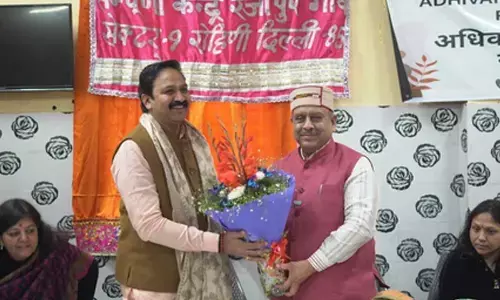Building 'backyards' better – an approach for urban agriculture in India

Building ‘backyards ’ better – an approach for urban agriculture in India
Every disaster calls for a plan to recover from the damage caused.
Every disaster calls for a plan to recover from the damage caused. The plan involves not only post-disaster reconstruction, but also an opportunity to build community's resilience in multiple dimensions - physical, social, environmental and economic. Such strategies of reconstruction were referred to as 'Build Back Better' (BBB) and became popular following Tsunami of the Indian Ocean in 2004. A set of BBB guidelines were embraced to achieve the goal of building resilient community in a holistic manner. Recovery from the COVID crisis is also being planned in many counties in a similar way by introducing policy packages that will help societies and economies to 'build back better'. Urban agriculture (UA) holds potential to contribute to the goals of recovery policies and in gaining economic, social and environmental resilience. Recognising the promises that UA makes, it is prudent to consider it as a part of post-COVID recovery policy.
Build Back Better for urban agriculture
Apart from bringing the systems back to functioning normally, the central focus of recovery policies remains in enhancing human-centric well-being and inclusiveness and thus considered as an opportunity for 'just transition'. In case of urban areas and the challenges it is posed with such as pollution, malnutrition and inequality; recovery must be aligned to mitigate these as well. Unlike other disasters, COVID-19 doesn't cause damage to physical property or infrastructure and thus, the recovery focus should be on bringing systemic and behavioral changes. With sustainability and resilience vision at the forefront, approach to UA can include the three key blocks for building it better.
Although a popular discourse around main objectives of urban farming used to be limited to provision of fresh and safe food, in the recent past the UA perspectives have changed a lot. UA is recognized now widely as multidimensional and hence multifunctional.
Building backyards better –
Self-sustenance of farms is determined by its biodiversity, and UA is no exception in that. With a range of ecosystem services, biodiverse UA ensures not only environmental, but social and economic benefits as well. These services include pollination, seed dispersal, pest regulation, food and nutrition provision and climate control. A combination of fruiting plants, vegetables, herbs and flowering plants complement each other in increasing yield and enhancing food and nutritional security. Integrating UA with beekeeping, flowering plants, composting, small-scale fish farming adds value to the circularity on farm. Even though the plot size of UA is usually very small, maintaining a closed-loop system will prove to be benefiting sustainability and resiliency.
Building food systems better –
UA is projected as a major sustainable alternative to enhance food and nutrition security of urban dwellers, especially the poor and marginalized. Production of fruits, vegetables, herbs, roots and some animal products within the cities improves local food security. Production, processing and distribution of food at a local level helps in minimizing wastage and efficient energy use. Localised food systems help in enhancing resilience of other systems too such as economy, health and the environment in addition to contributing to sustainability goals. A systemic design of UA will ensure urban sustainability and improve living standards of the marginalized in cities.
Building institutions better –
Vibrancy and success of UA will largely rely on support from policy and governance. Urban planners and decision makers should be able to work efficiently with a clear guidelines and directives on UA. Currently, since UA is neither recognized as valid land use category nor suppressed through regulations and land use control, it is not receiving the due attention and support of any sort. This sadly results in UA falling through the cracks of typical governance structure or is subject to confused and conflicting jurisdictions. Thus, UA needs institutional recognition and calls for multi-stakeholder agency with relevant sectoral governments, civil society organizations, community associations and individuals. The innovative experiments in various activities related to UA will need validation and authorization by experts, before its promotion and large-scale adoption by many. Similarly, the processes like identifying suitable crop mixes, crop rotations, inputs, pest control measures, harvesting methods, seed extraction and storage, processing, etc. become most effective when learned from peers. Hence there needs to be an institutional hybridization for supporting UA.
Recognizing the importance of the three blocks of building back UA individually and their interconnectedness will ascertain the most effective BBB strategy. Resetting of the 'backyards' will contributes to enhancing sustainability and resilience of our cities.
Article by Sheetal Patil, Researcher, Azim Premji University


















